Do you want to know why the paint of your car suddenly feels rough after waxing it? You’ve come to the right place, for we have researched this question, and we have the answer for you.
If car wax dries too much before buffing it off of your car, it becomes hard and difficult to remove. The roughness that you feel is the hard wax that is clinging to your car’s paint.
Let’s talk more about car wax and how to properly buff your car in the succeeding sections. Learn more about how to protect your car paint in the sections below.
Read on!
All About Car Paint
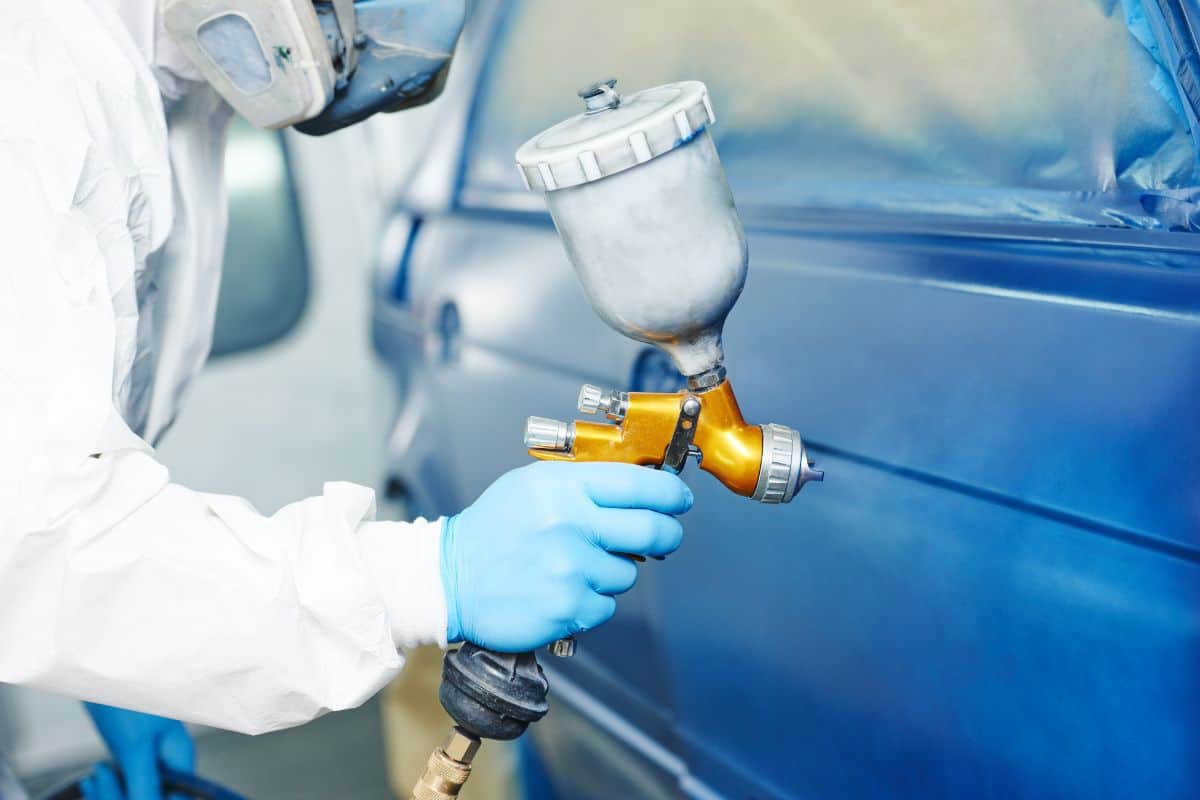
If you’re a firm believer that less is more, then you’d agree that a pristine car paint job is enough to bring beauty to any car.
However, paint does more than make your car beautiful. Automotive paint creates a protective layer to shield surface areas of the car from rust and corrosion.
Primer
First, you apply primer paint to your car. It is an undercoat that prepares the surface of the car for painting. It helps smooth the rough surfaces of the car.
The primer paint is responsible for encouraging paint adhesion. This prevents the paint from chipping off, flaking, or peeling. Some primers have mild acid components that etch metal to create a stronger bond for paint.
It also serves as a layer to prevent the metal from absorbing the paint too much, which ends up creating a dull finish.
Primers also help prevent rust and corrosion by sealing moisture.
Base Coat
The base paint or the base coat is applied over the primer paint. This is the paint that will provide your car with its final color.
Base coats don’t have any protective properties. It provides the color and nothing else. Thus, it does not provide any protection even to itself.
Without additional protection or hardeners over the base coat, it will easily blemish. Additionally, it lets moisture in that can lead to rust if moisture gets through the primer.
Clear Coat
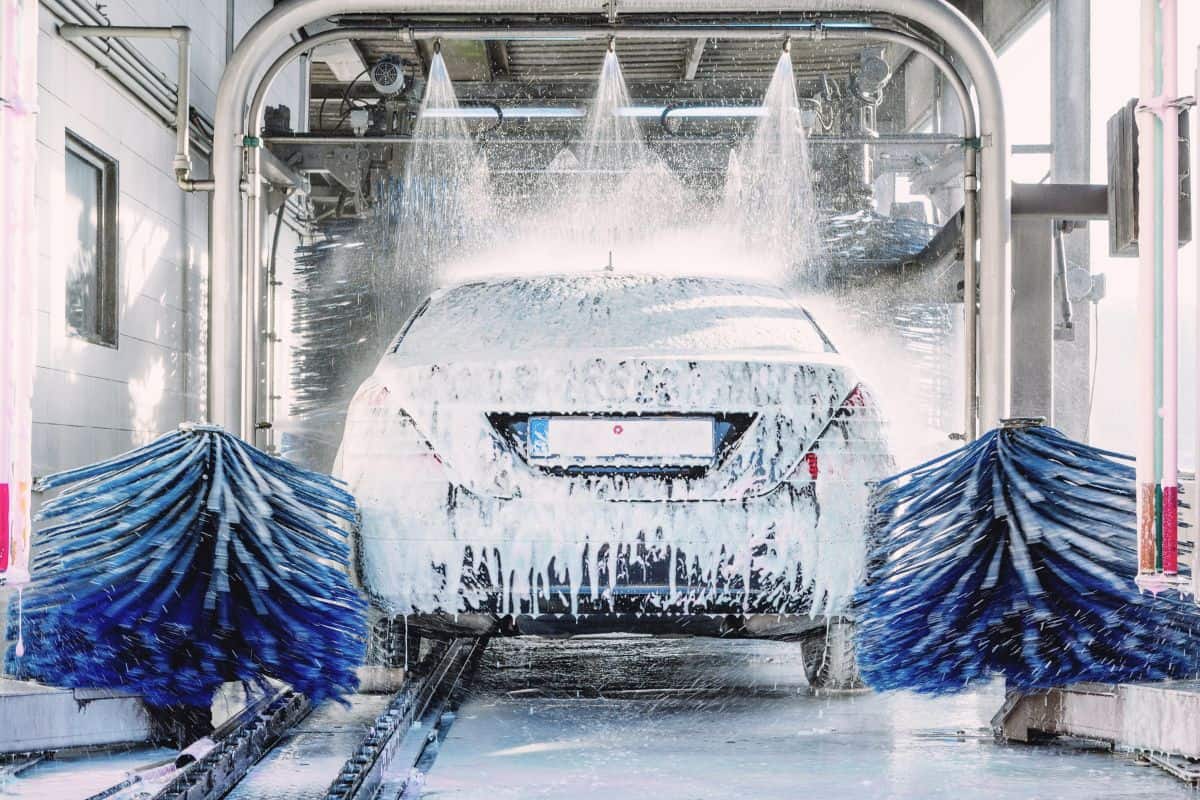
A clear coat is a transparent layer of paint that you apply over the base paint. The purpose of a clear coat is to provide UV protection. Without this protection, UV will easily fade the color of your car and make it look dull over time.
Urethane and polyurethane clear coats are effective as UV protection.
Moreover, the clear coat provides a protective layer that resists damage from external chemical agents like detergents, fuel, or oil. It also provides protection from mechanical agents that comes from washing the car.
There are different types of clear coats. The dry thickness of the clear coat is the basis of classification. If your clear coat has a higher dry thickness, then you’d need fewer layers to achieve the best protection.
In addition to protecting the base coat, the clear coat also makes your car shine.
How to protect car paint?
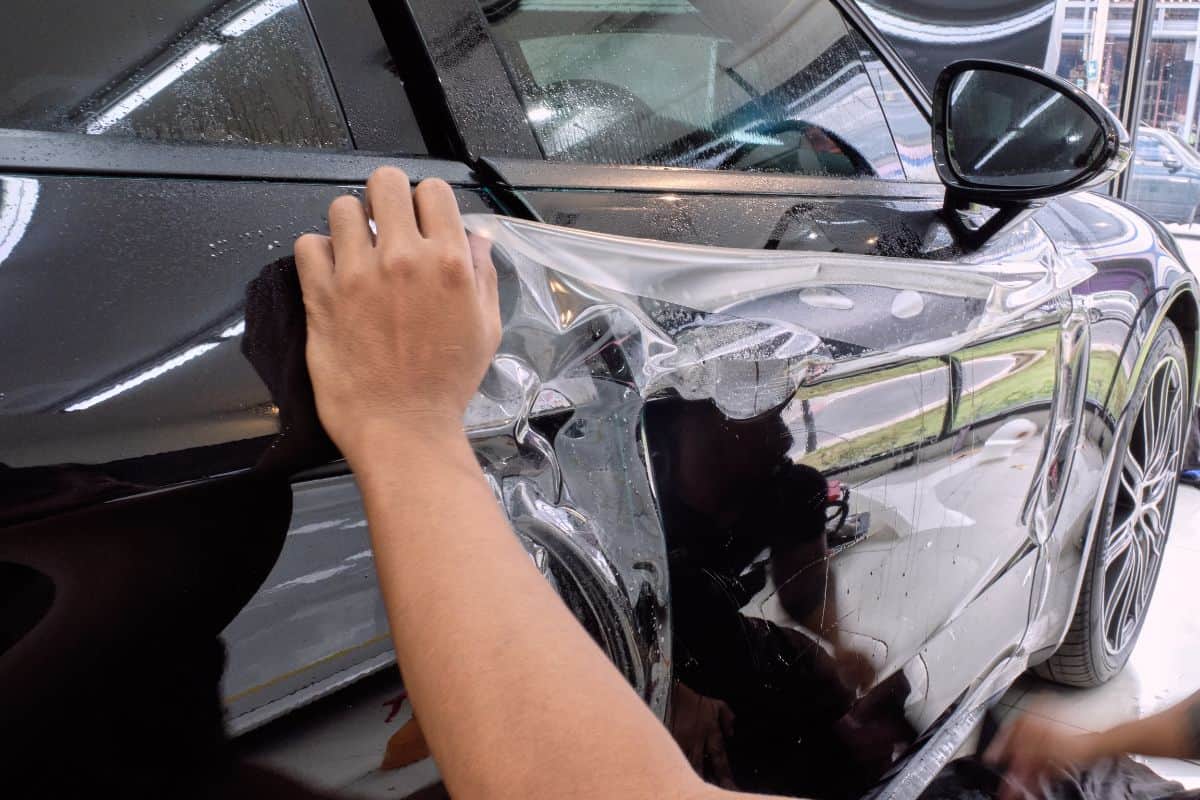
So, there’s a paint layer that protects the underlying paint layers, but what protects that outer layer? That falls to you as the owner.
Simply washing your car at least once a week is enough to get rid of any accumulated dust and grime from the week. Although this might sound simple, not everyone knows the proper way of cleaning their cars.
Here is a quick view of the steps.
Washing Your Car
- Park your car in the shade.
-
- Never wash your car under the sun.
- If the sun dries water on the finish, it will cause spotting.
- A bead of water on the car’s finish can act like a magnifying glass, intensifying the heat of the sun and damaging the finish.
- Rinse the car with slightly pressurized water to remove loose dirt.
- Spray bug and tar remover prewash on road tar, bugs, and tree sap.
- Wait up to five minutes or follow the manufacturer’s instructions.
- Rinse the area.
- Mix your car body wash with water in a bucket, following the manufacturer’s instructions.
- Fill a second clean bucket with clean water.
- Starting with the roof of the vehicle, apply fresh soapy water using a wash mitt or a clean cloth.
-
- Wash and rinse your car one section at a time.
- Use only a microfiber mitt and cloth.
- Rinse the roof of your car before proceeding.
- Rinse the mitt in a separate clean bucket of water.
- Repeat Steps 8 to 10 to wash the hood, the trunk, and the doors.
-
- Wash the door on one side at a time.
Chemical Guys Concentrated Bug and Tar Remover is available on Amazon through this link.
Chemical Guys Extreme Bodywash is available on Amazon through this link.
Cleaning The Wheels
- Rinse the wheel with water.
- Apply a cleaning product specially made for wheels. These products are made to get rid of brake dust and road grime.
-
- Pick a wheel cleaner that is made for the type of wheel on your car.
- There are special formulas for aluminum and chrome wheels.
- Wait for up to a minute to give the cleaning product enough time to loosen the dirt.
-
- Follow the manufacturer’s recommendations on how long you should wait after applying the cleaner.
- Rinse with a strong stream of water.
-
- If the wheel is very dirty, scrub the wheel with a wheel brush before rinsing.
Meguiar’s Wheel Cleaner is available on Amazon through this link.
Meguiar’s Wheel Brush is available on Amazon through this link.
Final Rinse And Drying
- Rinse the car with free-flowing water.
-
- Start from the top of the car and let the water flow down.
- Dry your car with chamois or microfiber cloth.
-
- If you’re going to use chamois, dip it in clean water and wring it.
- Chamois absorbs water better when it is moist.
- Wring the chamois out from time to time as you dry your car.
- Dry the door jambs last.
Amazon Basics Drying Chamois is available on Amazon through this link.
Cleaning The Windows
- Once the car is dry, use a spray-on window cleaner to clean the inside and the outside of each window.
-
- Use ammonia-free window cleaner to prevent damage to your tint.
- Spray a thin layer of window cleaner on the window.
-
- Spray window cleaner on a clean microfiber cloth instead of directly when you’re cleaning sensitive surfaces.
- Use one clean microfiber cloth to wipe off dirt and grime.
- Use a second dry cloth to buff away streaks.
Chemical Guys Glass & Window Cleaner is available on Amazon through this link.
Why does my paint feel rough after waxing?
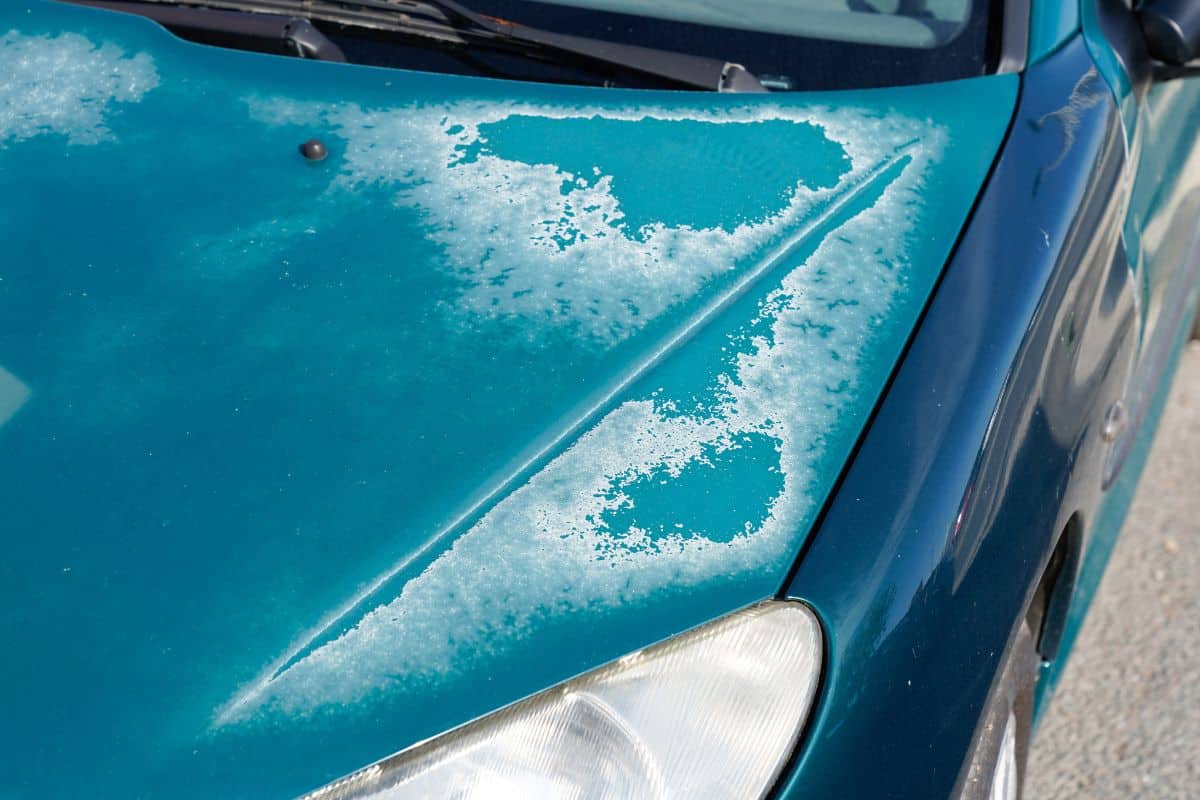
It is a good idea to wax your car after a good wash as a way to protect the finish. Applying car wax only takes an hour at most, and it can leave your car with a shine that makes all that work worth it.
However, if you don’t follow the instructions on the label, waxing your car can easily turn into a whole day of nightmare and hard work.
Leave the wax on only within the time that the manufacturer recommends. Leaving the wax on your car beyond this time can cause the wax to dry too much. Once the wax is too dry, it will become difficult to remove.
If you make the mistake of leaving the wax overnight (some people think this will produce better results), the wax will harden. You can no longer remove the wax with a microfiber cloth once it hardens.
Once the wax hardens, the paint will feel uneven and rough to the touch.
As a rule of thumb, wait only for the car wax to haze, then buff it.
Always read the manufacturer’s instructions in case there is a special way to apply and buff the wax.
Types Of Car Wax
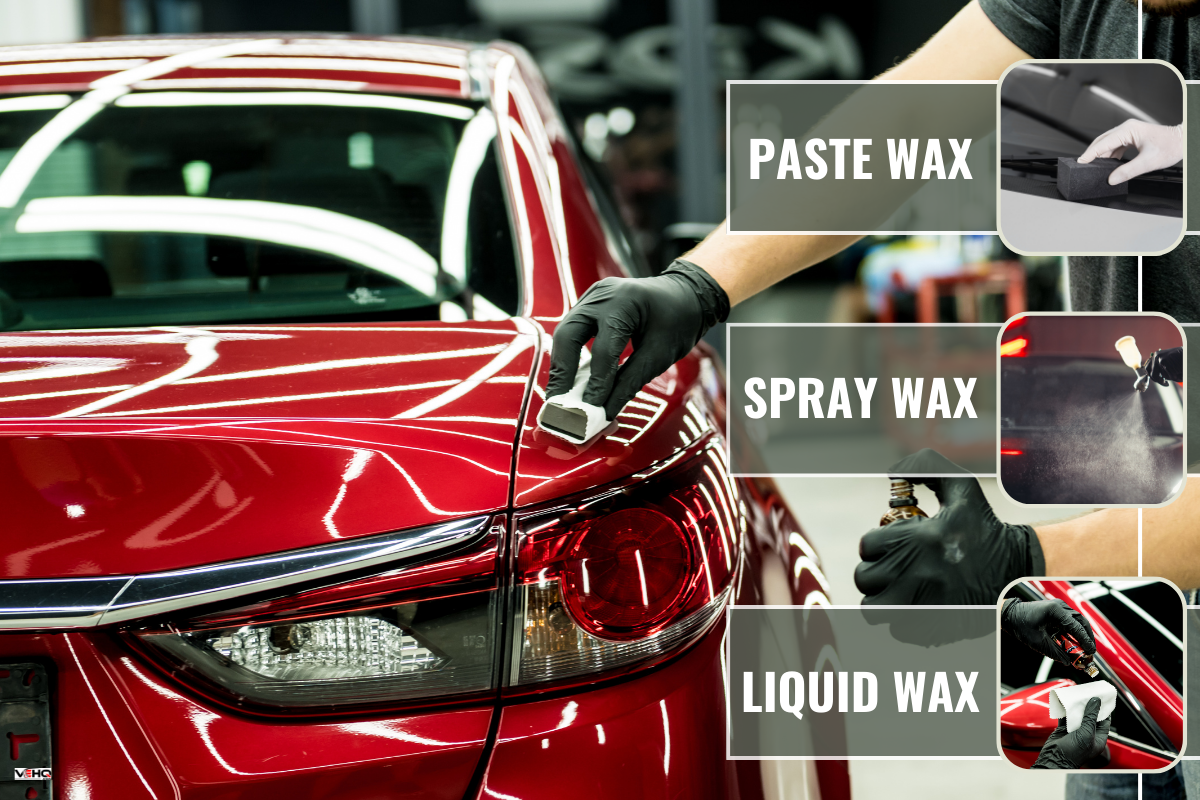
Paste Wax
Paste wax provides the best protection. However, these are the most complex, so always read the instructions on the label. Paste wax takes longer than the other types to dry.
Keep in mind that paste car wax is the most difficult to remove if they harden on your car. Thus, it is important to closely monitor the wax’s drying.
Spray Wax
Spray wax dries the fastest. Because of this, there is hardly any wait time after application. You can buff it almost as soon as you finish applying it.
However, spray waxes provide the least amount of protection among the three types of car waxes. On the upside, it is also the easiest to remove if it hardens on your car.
Liquid Wax
Liquid wax covers the middle ground between a spray wax and a paste wax. They provide moderate protection and don’t dry too fast as spray waxes do.
Since liquid waxes cover the middle ground, they are best for those who don’t like spray waxes that dry too fast.
How to remove hardened car wax?
The best way to remove hardened car wax is by using orbital polishers or a similar tool. Keep in mind that whatever method you use in removing hardened wax, there will always be a risk of scratching the finish of your car.
Here are the steps that you can follow.
- Rinse your car thoroughly with lukewarm water.
- Dry with a microfiber cloth.
- Use the orbital polisher to remove the hardened wax. Do not apply too much force to reduce the possibility of scratching the paint.
-
- You will know that the wax is going away when the surface starts to look shinier.
Conclusion
Always follow the instructions for using car wax, whichever type you decide to use.
If you found this article interesting, check out the two articles below too:






